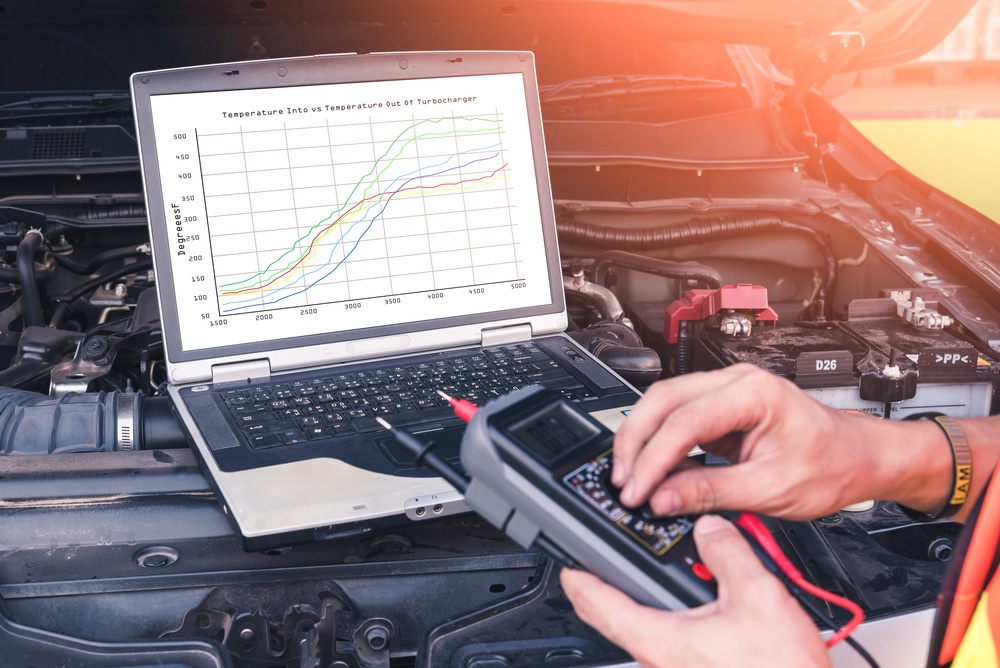With the new year here lots of people are working on their resolutions. A lot of people resolve to be better when it comes to their personal health—whether that’s eating healthier or exercising more, etc. But a new resolution that can be helpful for anyone’s health is to become safer.
Road safety is especially important. The safety measures you take on the road affect the health and safety of yourself, those in your vehicle and the public around you.
Being safe on the road starts with you. Also, as with any change in your life, these new resolutions require new habits. Thankfully, Road Safety at Work created a list of a number of things you can check in, on or around your vehicle every day. Many of them help to make sure that your vehicle is safe to drive before you even leave your driveway.
- Engine Oil
Checking your engine oil regularly is important to keep your motor properly lubricated. You should check your oil level daily and top up as necessary, checking your owner’s manual to make sure you’re using the right kind of oil.
- Tire Air Pressure
Take a walk around your vehicle. Check the air pressure on your tires looking to see that they’re all properly inflated, undamaged and wearing normally. This can keep your car in good condition and also prevent a dangerous surprise down the road.
- License Plate
While walking around your vehicle make sure that both your license plates are on, attached firmly and visible.
- Leak Check
Look underneath your vehicle to look for evidence of fluid either dripping from, pooling underneath or accumulating on your vehicle. Being mindful to look as you are driving in, or out, of regular parking spots to look for this fluid as well.
- In-car ergonomics
When you enter your car adjust your seat, headrest and steering column, if necessary, to be in an ideal driving position.
- Headlights
Check and make sure that your headlights are working properly. Turn on your low beams, high beams and fog lights to make sure they are all in good working order.
- Tail Lights
Checking your tail lights before you begin driving is important as well.
- Turn Signal
Turn on your left and right turn signals, making sure that the lights are working both in the front and back of your vehicle.
- Emergency Signal
Turn on your emergency signal and confirm that it is working properly.
- Windshield
In addition to checking your windshield for damage like chips and cracks, making sure your windshield is clean is important as well. Keep a clean cloth handy to clean the inside of your windshield.
- Wipers
Check your wiper blade controls to make sure they work. Confirm that your wipers are clearing your windshield and replace them when you see them leaving streaks or gaps.
- Heater/Defroster
In the winter and during changes in temperature heaters or defrosters play a key role in keeping your windshield clear and un-fogged. Test them before you take off to make sure the fan works well and that the flow direction is effective.
- Horn
Toot your horn to make sure it’s working.
- Seatbelt
Seatbelts are very important for your personal safety. Check to see that the seatbelt and its mechanisms are working properly.
- Rear vision mirrors
Upon entering your car make sure that that the rear vision mirrors are set for optimal rear vision. When they are angled ideally also make sure that they’re all undamaged and clean.
- Parking brake
Test your parking brake to make sure it is still functioning properly.
- Brakes
While leaving your garage and before entering traffic gently tap the brakes to confirm that they are working effectively.
- Instrument Panel – Gauges / Warning Lights
Looking at your instrument panel confirm that all the gauges indicate everything is in working order for a safe drive and that there are no warning lights on.
- Vehicle Documentation
Before leaving in your vehicle make sure you have the proper documents with you. Check for your driver’s license and make sure there is a copy of the vehicle registration on board.
- Engine Noises
Noises coming from your vehicle can indicate that something is wrong. While your engine is running listen for any unusual sounds.
- Roadside Emergency / First Aid Kit
A roadside emergency and first aid kit are very important for your health and safety on the road. Make sure that you’re prepared and that all the essentials are in both.
If you have been injured, and need legal assistance, call #1000 on your cell phone for free. We will offer you a free claim assessment.






